Once you learn how to save spinach seeds, you’ll never have to rely on seed companies again—and your garden will keep rewarding you year after year. Spinach is a nutritious and delicious leafy green that is packed with essential vitamins and minerals. Growing spinach in your garden ensures a steady supply of fresh, healthy produce throughout the growing season. If you’re just getting started, read our full guide on how to grow spinach in your garden.
This post may contain affiliate links. If you use these links to buy something we may earn a commission. Thanks.
In this blog post, we will guide you through the entire process of saving spinach seeds, from allowing your plants to flower to properly storing your seeds for future use.
If you’re more of a visual learning here is a YouTube video of me saving spinach seeds.
Why Save Spinach Seeds?
Saving spinach seeds offers multiple benefits:
- Cost Savings: Buying seeds every season can add up. Saving your own seeds allows you to grow spinach year after year without additional costs.
- Self-Sufficiency: By saving seeds, you reduce dependency on seed suppliers and ensure a reliable source of spinach for future growing seasons.
- Adaptation: Over time, your saved seeds will adapt to your local growing conditions, leading to stronger, more resilient plants.
- Preservation of Heirloom Varieties: Many commercial seeds are hybrids, which do not always produce viable seeds. Saving your own seeds allows you to preserve heirloom or open-pollinated varieties. Just like we do when saving pea seeds for next year, which makes a big difference in seed costs over time.
Understanding The Spinach Life Cycle
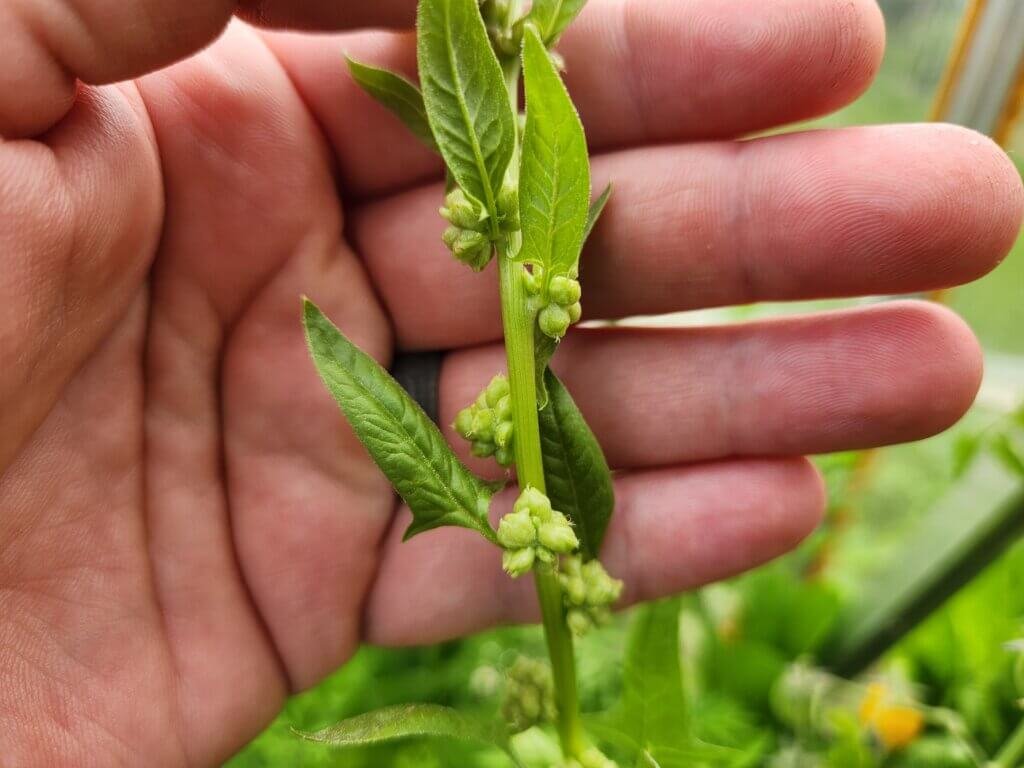
Spinach is an annual plant, meaning it completes its life cycle in one year. It begins with leafy growth, and as temperatures rise, it bolts (flowers or goes to seed). Once the plant bolts, it produces seeds or flowers before dying back. This natural process is key to successfully saving seeds.
Do I Need Both Male And Female Spinach Plants To Save Seeds?
Yes. Spinach is dioecious, meaning some plants produce only male flowers (pollen) and others produce only female flowers (seeds). Female plants make the seeds you will collect, but they require pollen from nearby male plants to develop them.
Letting The Spinach Plant Flower

The first step in saving spinach seeds is allowing your plants to bolt and flower. As temperatures increase in late spring or early summer, spinach plants will send up a tall stalk with small greenish-yellow flowers. This is a sign that the plant is reaching the end of its life cycle.
Tips For Encouraging Flowering:
- Stop harvesting leaves to allow the plant to focus on seed production.
- If growing multiple spinach plants, ensure proper spacing to prevent overcrowding.
- Water the plants less frequently; drier conditions speed up the bolting process.
- Allow the flowers to fully mature and dry on the plant.
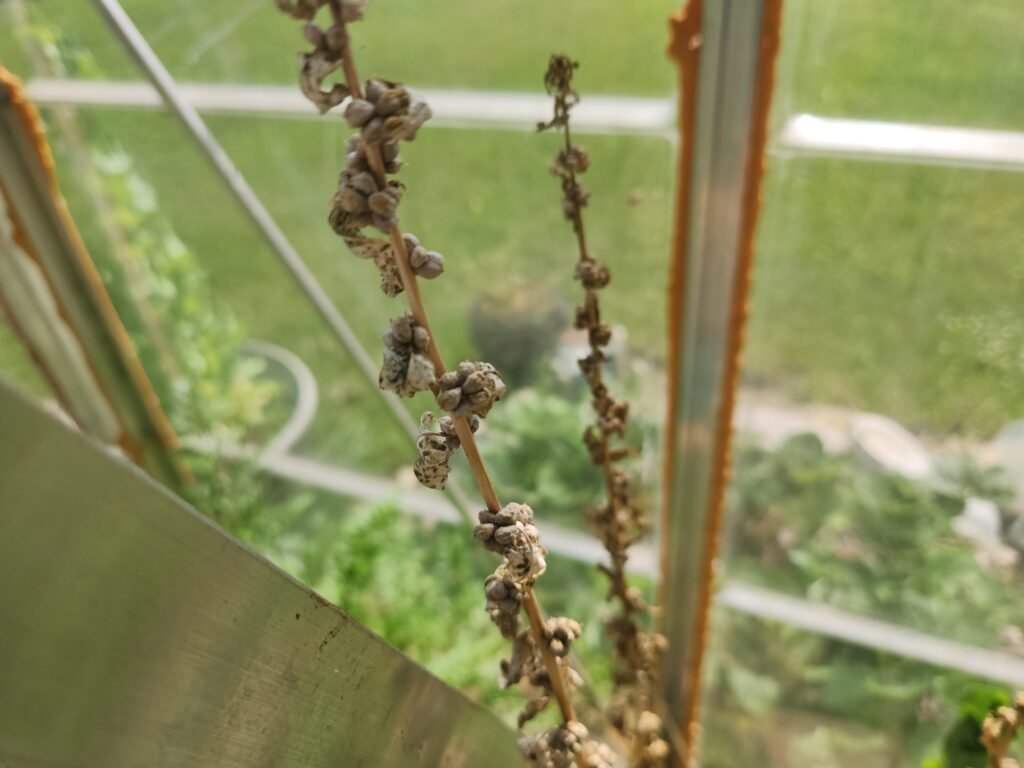
How To Harvest Spinach Seeds
Once the flowers have dried and turned brown, they are ready for seed collection. The seeds are small, round, and attached to the dried flower heads.
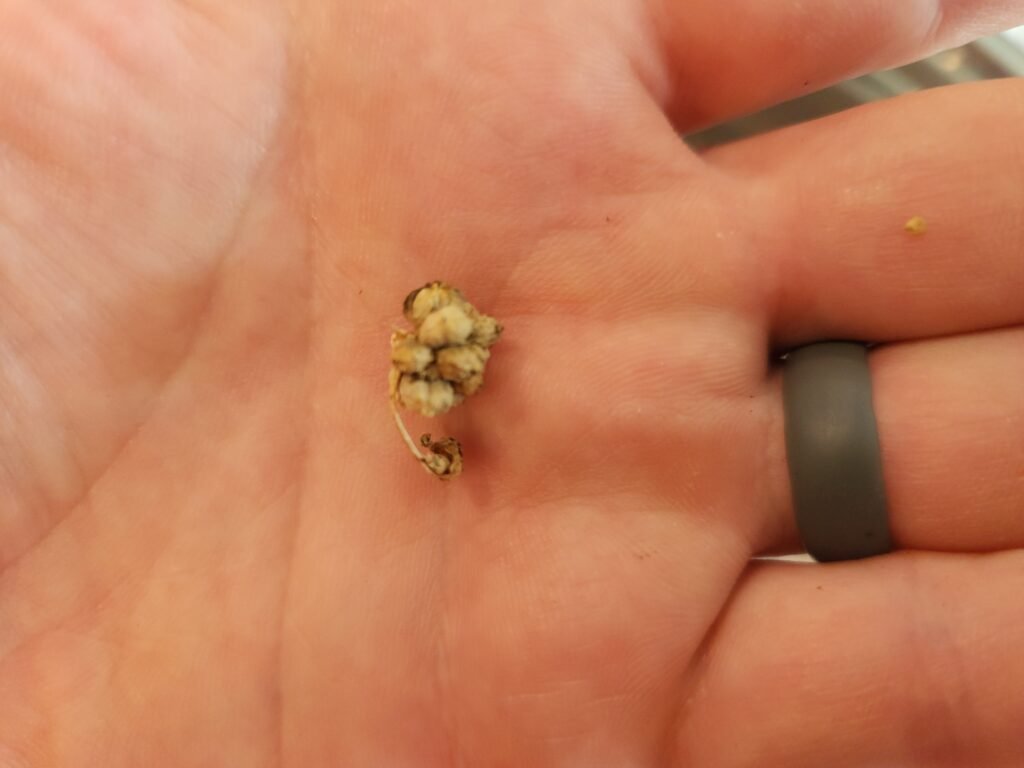
Steps To Harvest Spinach Seeds:
- Remove Large Debris: Pick out any large plant material before moving on to the cleaning process.
- Cut the Seed Stalks: Use garden scissors to cut the dried seed stalks from the plant.
- Collect the Seeds: Hold the stalk over a bowl and gently rub the dried flower heads between your fingers. The seeds will fall into the bowl.
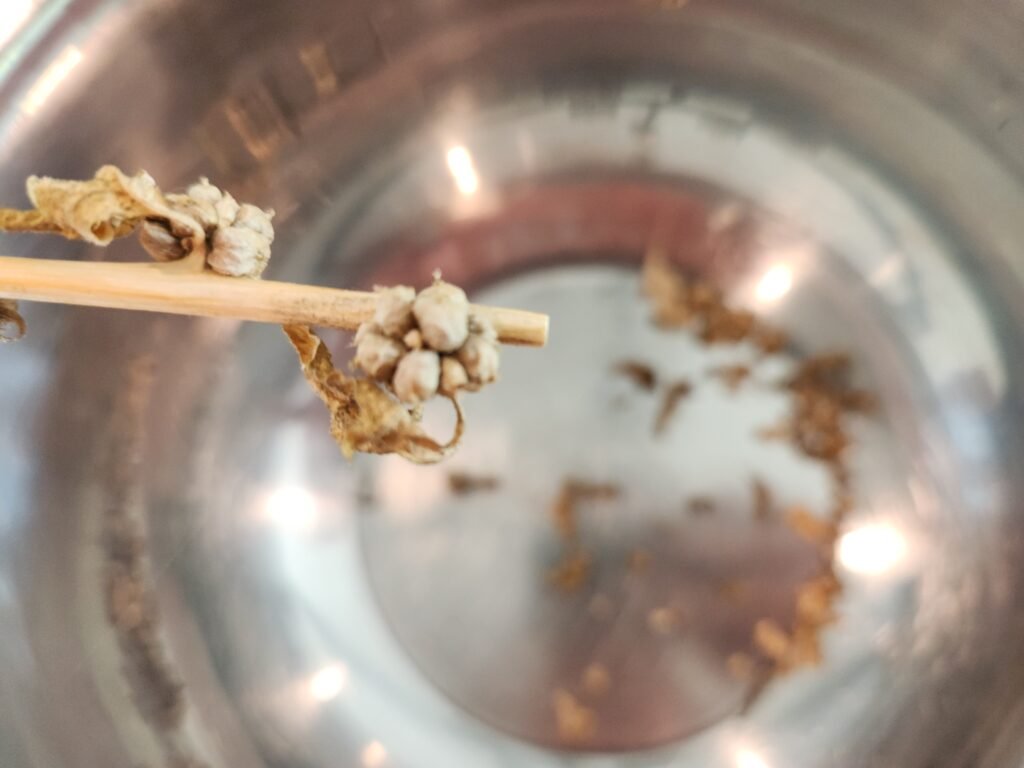
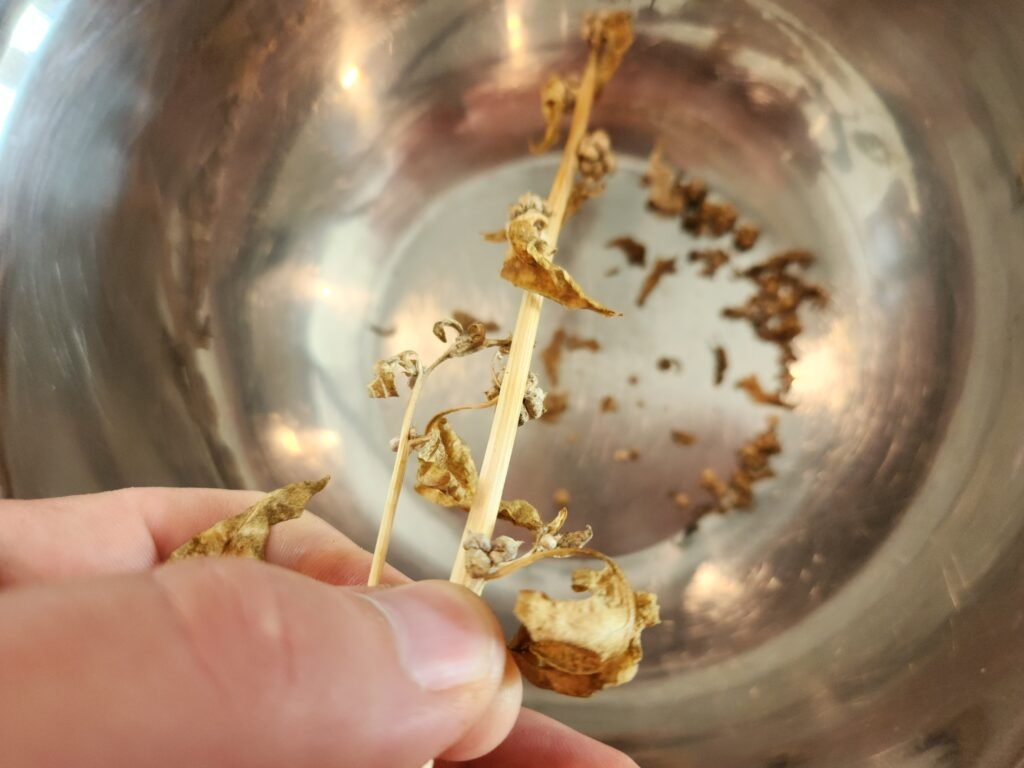

How To Clean Spinach Seeds
Spinach seeds often have chaff or debris that needs to be removed before storage. Cleaning ensures that only viable seeds are kept for future planting.
The Winnowing Method:
Winnowing is a traditional technique used to separate seeds from lighter debris. Here’s how to do it:
- Set Up a Fan: Place a small fan outside on a low setting.
- Position Two Bowls: Hold one bowl filled with seeds above an empty bowl.
- Pour Seeds in Front of the Fan: Slowly pour the seeds from one bowl to the other in front of the fan. The heavier seeds will fall into the second bowl, while the lighter chaff will blow away.
- Repeat the Process: Continue winnowing 5-6 times until the seeds are clean.
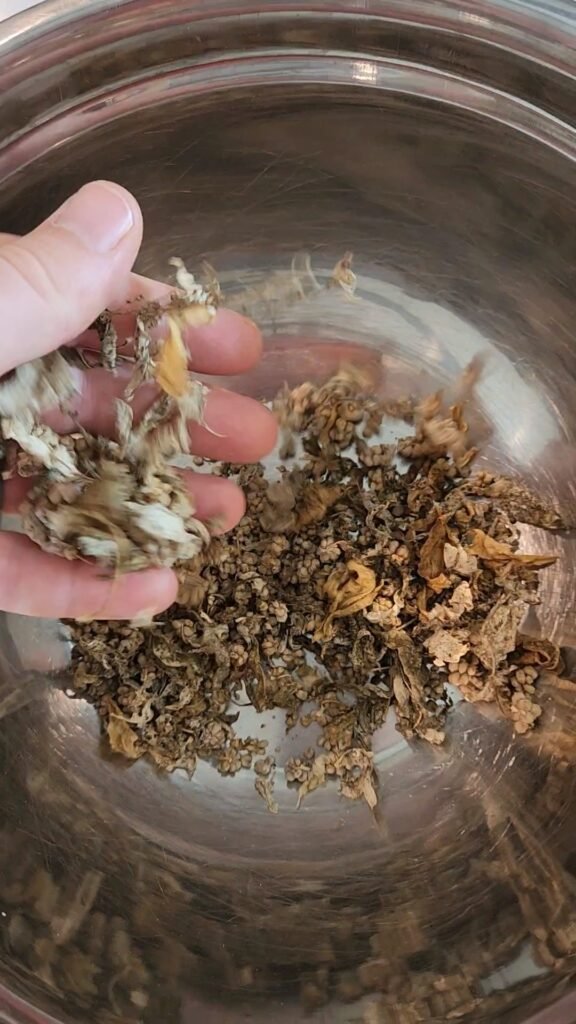
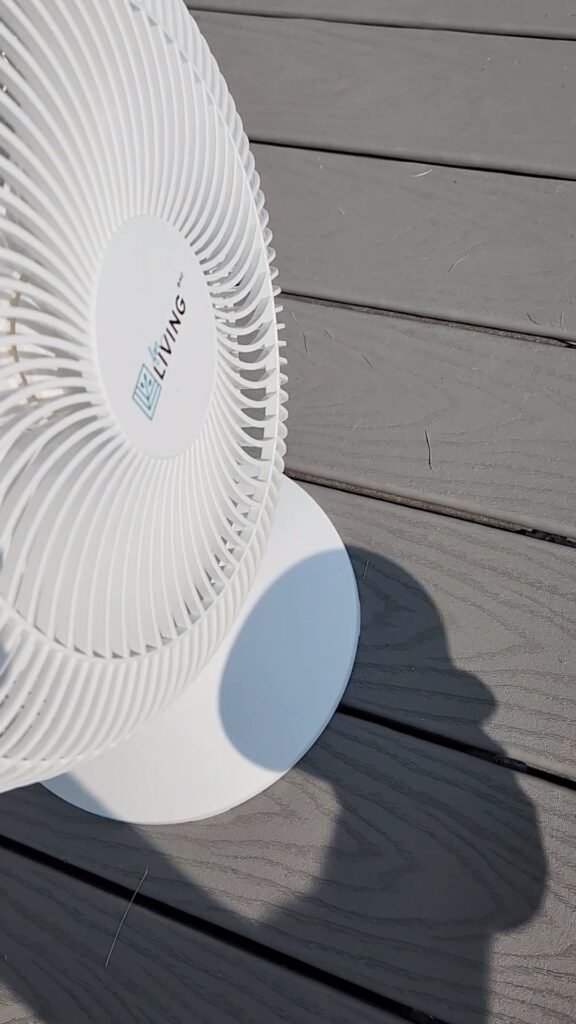
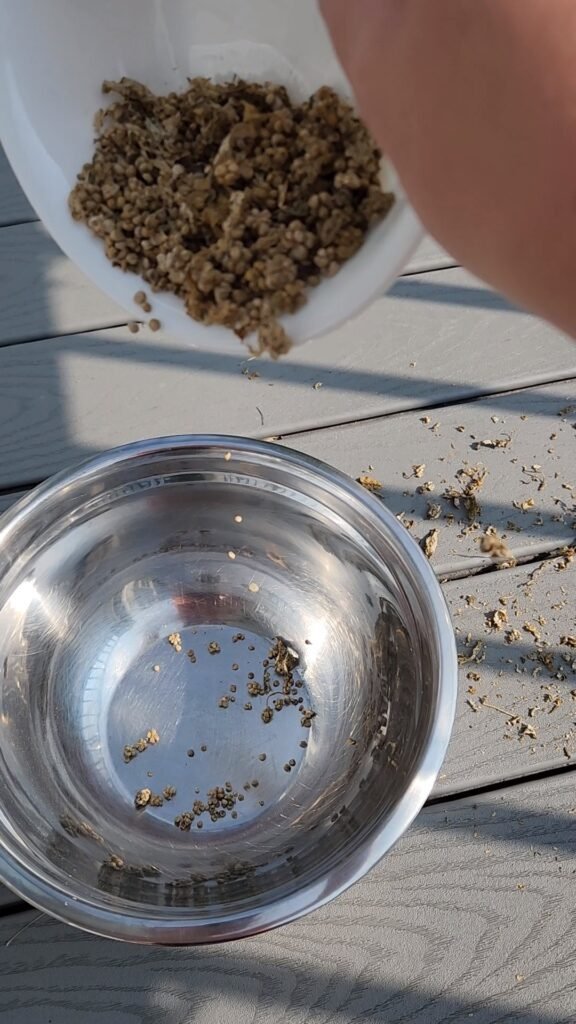
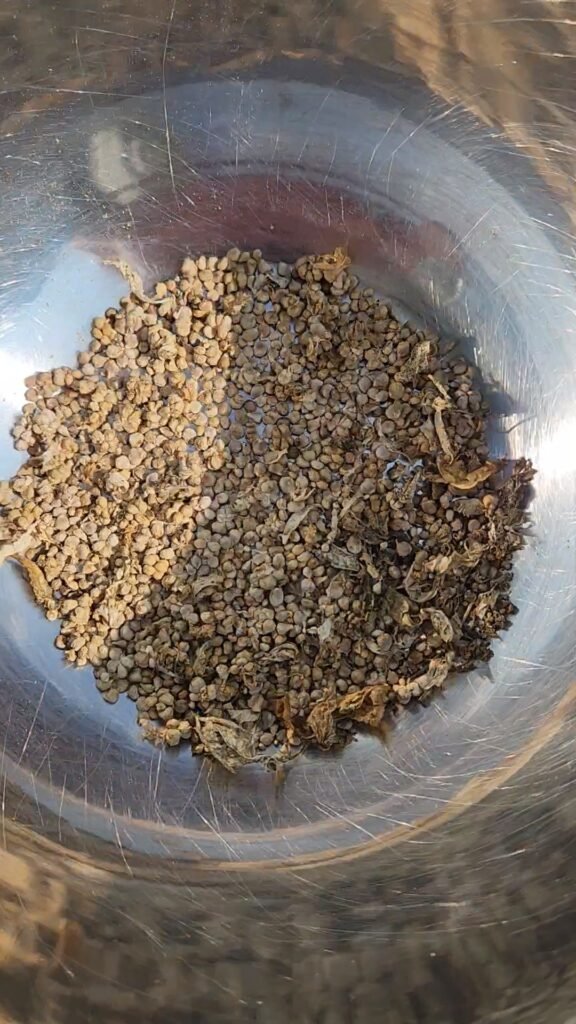
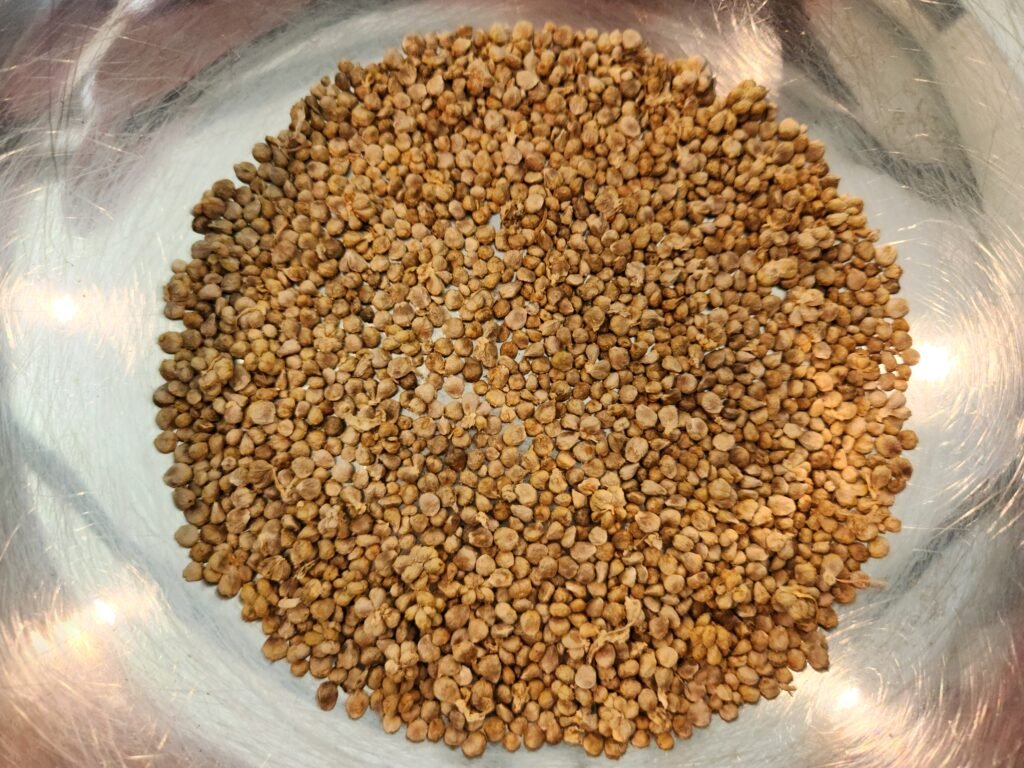
How To Dry Spinach Seeds
Before storing, spinach seeds need to be completely dry to prevent mold or rot.
Drying Steps:
- Spread the seeds in a single layer on a paper towel, tray, or baking sheet.
- Place them in a warm, dry area with good air circulation.
- Allow the seeds to dry for about two weeks.
- Test dryness by pressing a seed between your fingers—if it breaks instead of bending, it is fully dry.
How To Store Spinach Seeds
Proper storage extends the viability of your seeds and ensures a successful future harvest. We use the same airtight storage method when saving tomato seeds and saving carrot seeds.
Best Storage Practices:
- Use Airtight Containers: Glass jars, resealable plastic bags, or seed envelopes work well.
- Label Clearly: Include the date and seed variety on the container.
- Store in a Cool, Dark, and Dry Place: A pantry, cupboard, or refrigerator (inside a moisture-proof container) is ideal.
- Add Silica Gel Packets: This helps absorb any remaining moisture and keeps the seeds dry.
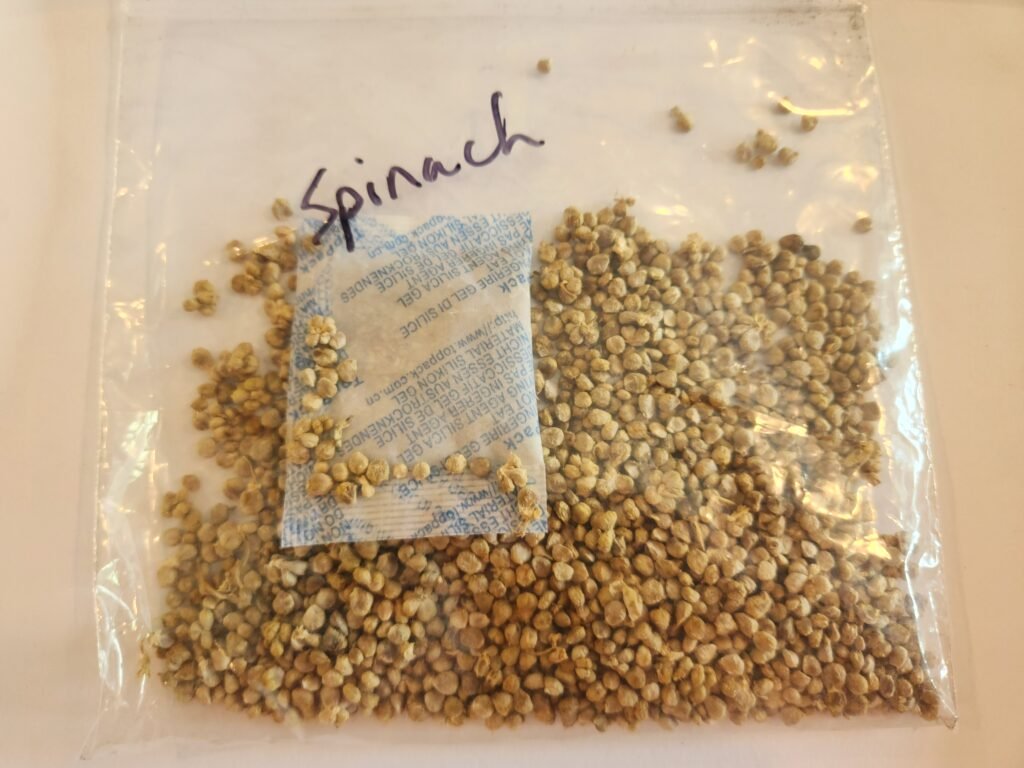
How Long Do Spinach Seeds Last?
With proper storage, spinach seeds remain viable for up to five years. However, for the best germination rates, try to use them within two to three years.
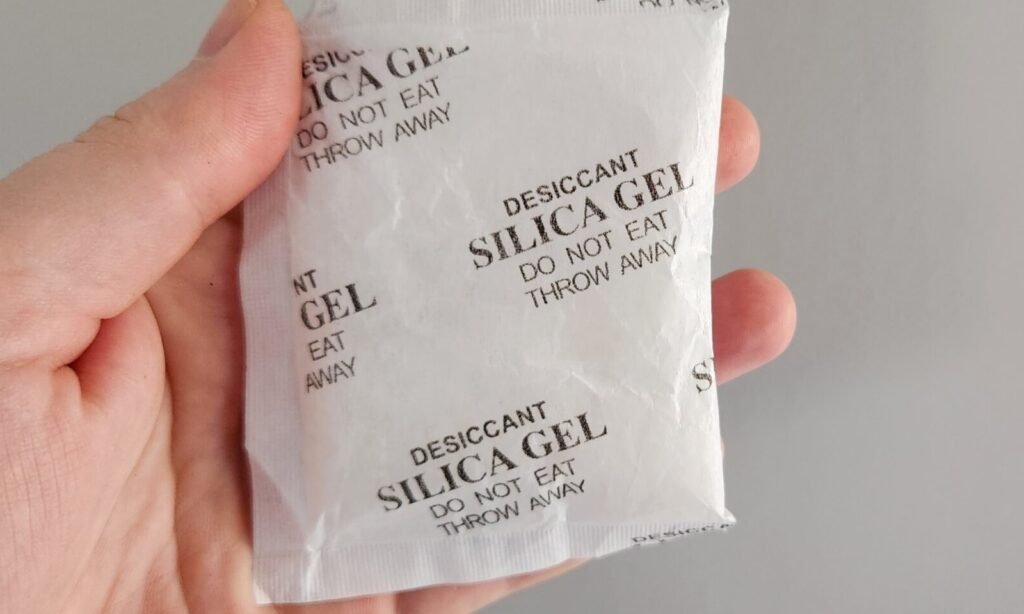
Additional Tips for Saving Spinach Seeds
- Grow Heirloom or Open-Pollinated Varieties: Hybrid spinach varieties may not produce true-to-type seeds, leading to unpredictable results.
- Space Plants to Prevent Cross-Pollination: If you grow multiple spinach varieties, separate them by at least 1,500 feet or use physical barriers to prevent cross-pollination.
- Test Germination Before Planting: To check if stored seeds are still viable, place a few on a damp paper towel in a warm place. If at least 70% sprout within a week, they are still good to plant.
FAQ: Saving Spinach Seeds
Most hybrid spinach varieties will not produce true to type seeds, meaning the plants grown from saved seed may not look or taste like the parent plant. For the best results, choose heirloom or open-pollinated spinach varieties when saving seeds.
A single spinach plant can produce hundreds of seeds if allowed to fully flower and mature. Even a small patch of spinach can provide enough seeds for several future growing seasons.
No, spinach seeds do not require cold stratification. However, they do germinate best in cool soil, ideally between 45–68°F (7–20°C).
Spinach is wind pollinated, so varieties can cross easily if grown close together. To prevent cross pollination, separate different spinach varieties by at least 1,500 feet, or grow only one variety at a time if saving seed.
With proper storage in a cool, dry, and dark place, spinach seeds can remain viable for up to five years. For the highest germination rates, try to use them within two to three years.
Do a germination test. Place 10 seeds on a damp paper towel inside a plastic bag. Keep it warm and moist for a week. If 7 or more sprout, your seeds are still viable.
No. Store-bought spinach is harvested before maturity and will not provide viable seeds. To save seeds, you need live spinach plants that are grown in your garden and allowed to flower and produce seed.
Conclusion
Saving spinach seeds is a simple, rewarding process that allows you to grow your own spinach year after year without spending extra money. By following these steps—allowing your plants to flower, harvesting seeds, cleaning them, drying thoroughly, and storing properly—you can ensure a steady supply of high-quality spinach seeds for future seasons.
Not only does this practice save money, but it also contributes to a more sustainable and self-sufficient gardening approach. If you’re interested in learning more about growing spinach, check out our comprehensive spinach growing guide.
We hope you enjoyed this seed saving guide. If you did make sure you check out the other growing guides, seed saving guides and our recipes. We are growing our website with more articles all the time, and we invite you to grow with us. Whether you’re a seasoned gardener or just starting out, saving spinach seeds can be an enriching experience. If you have any questions or want to share your seed saving journey, feel free to leave a comment below. Happy gardening!

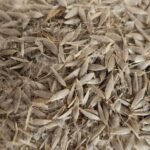
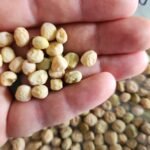
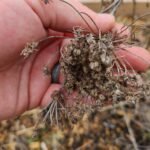

Can you write more about it? Your articles are always helpful to me. Thank you!
I really appreciate your help